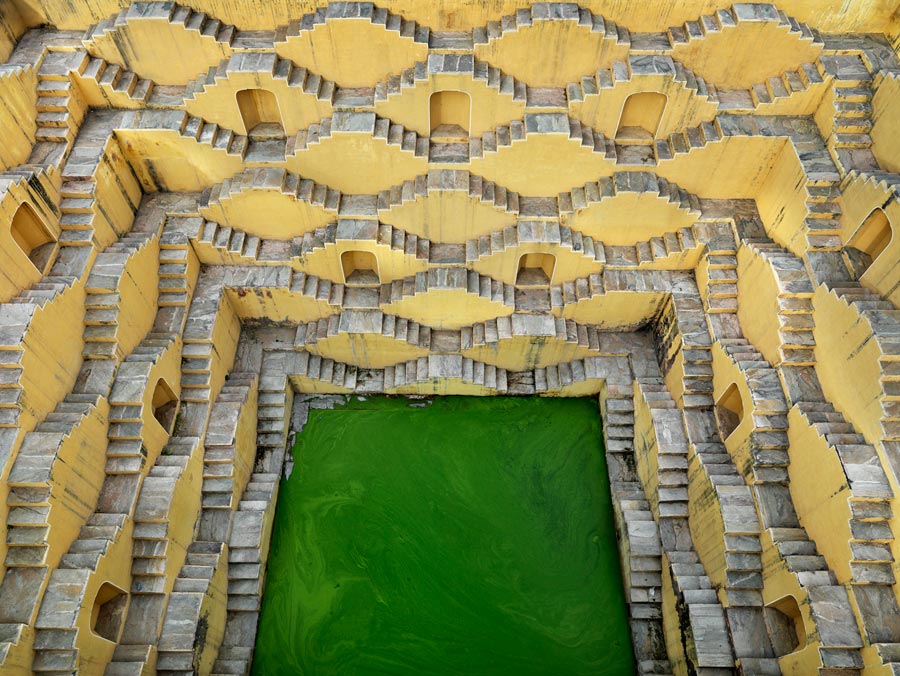-
Oh Well

Photo: Edward Burtynsky, “Stepwell #4”, Sagar Kund Baori, Bundi, Rajasthan, India, 2010. © Edward Burtynsky, courtesy Nicholas Metivier Gallery, Toronto / Galerie Röpke, Köln / Galerie Springer, Berlin.
-
Given the length of the dry periods between the annual monsoons in parts of India, maintaining a year-round supply of water has often required digging deep into the earth to tap the underlying groundwater. This has led to the development of a unique architectural form called the “stepwell”, which has been around since about 200 CE. Scaled to accommodate the massive swelling of the water table after the annual inundation, the eponymous stepped sides also enable communal access to the water.
To keep the exposed water as cool as possible, many smaller wells are partially covered to provide shading, whilst the larger ones are often deep enough to ensure water at the bottom remains cool. These chilled depths, contrasting with the hot sun above ground, set up convection currents within the well architecture, generating a similar cooling effect to that utilised by wind towers across the Middle East.
In the late nineteenth century, the British, worried about water hygiene, began to install pumped and piped water systems and the stepwells became redundant. Except for the most spectacular examples, which are maintained for tourists, the majority have been condemned to slow dereliction. I (rgw)

Photo: Edward Burtynsky “Stepwell #2″, Panna Meena, Amber, Rajasthan, India, 2010. © Edward Burtynsky, courtesy Nicholas Metivier Gallery, Toronto / Galerie Röpke, Köln / Galerie Springer, Berlin.
-
Search
-
FIND PRODUCTS
PRODUCT GROUP
- Building Materials
- Building Panels
- Building technology
- Façade
- Fittings
- Heating, Cooling, Ventilation
- Interior
- Roof
- Sanitary facilities
MANUFACTURER
- 3A Composites
- Alape
- Armstrong
- Caparol
- Eternit
- FSB
- Gira
- Hagemeister
- JUNG
- Kaldewei
- Lamberts
- Leicht
- Solarlux
- Steininger Designers
- Stiebel Eltron
- Velux
- Warema
- Wilkhahn
-
Follow Us
Tumblr
New and existing Tumblr users can connect with uncube and share our visual diary.
»What the map cuts up, the story cuts across.«
Michel de Certeau: Spatial Stories
Keyboard Shortcuts
- Supermenu
- Skip Articles
- Turn Pages
- Contents


